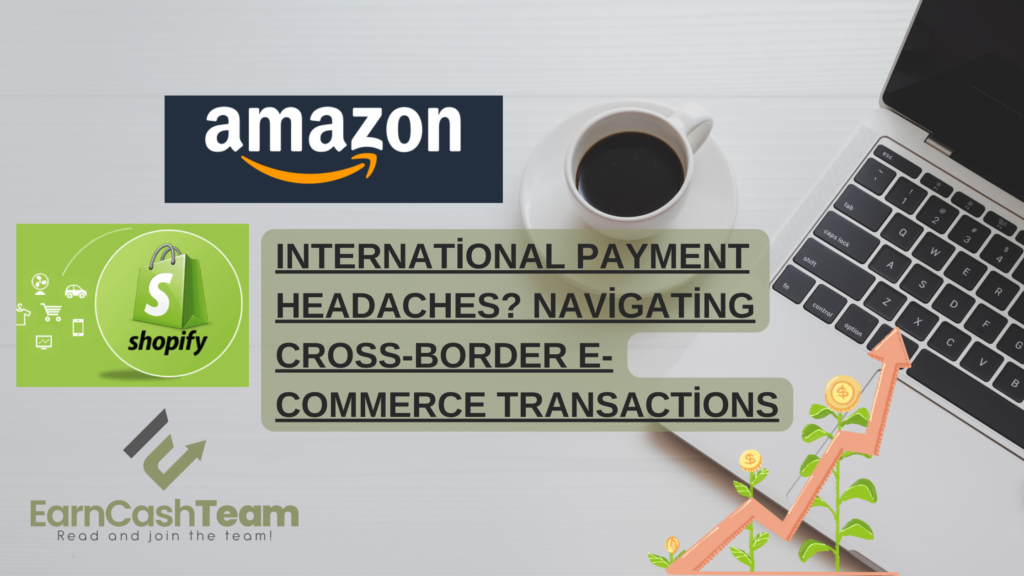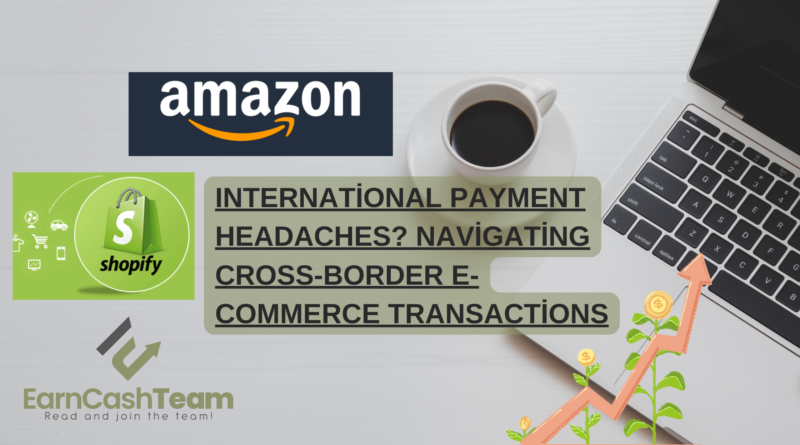International Payment Headaches? Navigating Cross-Border E-commerce Transactions
In the interconnected world we live in e commerce has become an aspect of our everyday existence. Nevertheless as companies extend their influence beyond boundaries they frequently confront a multitude of obstacles. One of the most significant issues is navigating cross-border E-commerce transactions.
You can check out other tips for e-commerce with us!
You can also directly reach out Amazon, etsy, Shopify etc. now!

The Challenges of Cross-Border E-commerce Transactions
Currency Fluctuations
One of the most immediate challenges in cross-border E-commerce transactions is dealing with currency fluctuations. In order to stay competitive and avoid losses businesses need to review and adjust their pricing strategies to make sure they are still viable, in the market.
Regulatory Hurdles
The. Regulations governing e commerce vary, from country to country. This can make it challenging for businesses operating internationally as they navigate through a environment. From taxation to safeguarding consumer rights companies need to have an understanding of the framework, in each country where they conduct business.
The Importance of Payment Gateways
Secure Transactions
Payment gateways play a crucial role in ensuring that cross-border E-commerce transactions are secure. To ensure the security of both buyers and sellers they employ encryption techniques to safeguard information, like credit card numbers and personal data.
Multiple Payment Options
Providing customers with a range of payment options can greatly enhance their experience. Payment gateways frequently offer methods such, as credit cards, digital wallets and bank transfers to accommodate the preferences of customers from, around the world.
Solutions for Smoother Cross-Border Transactions
Dynamic Currency Conversion
Dynamic Currency Conversion (DCC) provides customers with the ability to view prices and payments using their preferred currency. This not improves the user experience but also assists businesses in effectively managing currency fluctuations and associated risks.
Local Partnerships
Forming partnerships with local businesses can be an effective way to navigate cross-border E-commerce transactions. Working closely with partners can offer insights, into the market and assist in navigating regulatory challenges.
The Future of Cross-Border E-commerce
As technology continues to evolve, so will the methods for conducting cross-border E-commerce transactions. For example blockchain technology provides an transparent method, for carrying out transactions without relying on middlemen.
Leveraging Data Analytics for Optimized Cross-Border Operations
In the age of Big Data, analytics can serve as a powerful tool for improving cross-border E-commerce transactions. Businesses can extract insights by examining customer behavior, payment methods and transaction processing time.
These insights prove instrumental, in streamlining operations identifying bottlenecks and predicting trends, in e commerce. Consequently companies can make informed decisions based on data to improve customer satisfaction and drive revenue growth. This approach helps simplify the complexities associated with border transactions while ensuring profitability.
Final Thought
Navigating cross-border E-commerce transactions can be a complex task, fraught with challenges like currency fluctuations and regulatory hurdles. However by implementing strategies and utilizing technologies businesses can not only endure but also prosper in the global market. As our world becomes more interconnected the capacity to carry out secure transactions will no longer be just a benefit but an absolute requirement.




